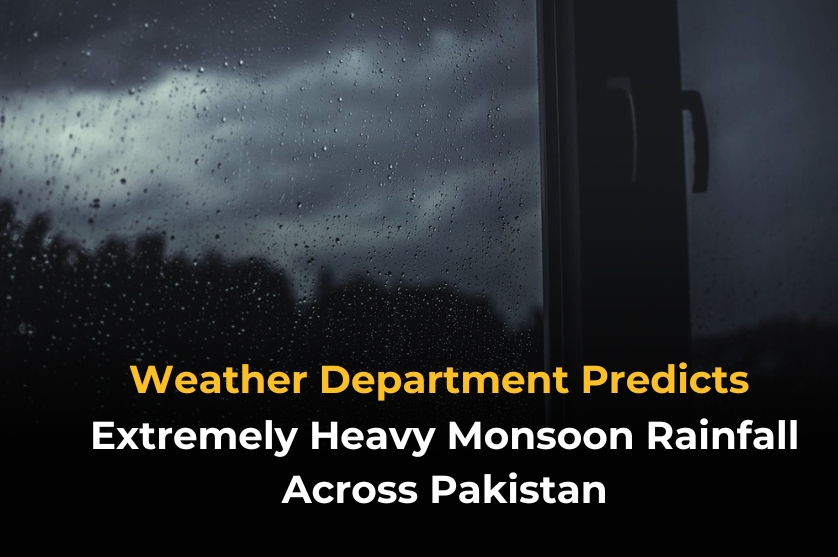Imagine this: it’s dawn, and the skies are already thundering. In a matter of minutes, heavy rain in Pakistan starts to pound rooftops, inundate streets, and turn quiet alleys into raging streams. In Karachi, umbrellas are turned inside out. In Murree, mist shrouds roads. In Skardu, river valleys ring with the thunder of overflowing rivers. All over the country, monsoon season in Pakistan is no longer simply a weather phenomenon—it’s a test of preparation, patience, and determination.
What’s Driving This Severe Monsoon?
According to the Pakistan Meteorological Department, heavy monsoon currents from the Arabian Sea and Bay of Bengal are moving towards the nation. A Low Pressure System over the Bay of Bengal will enhance rains from 17 August, boosted by a westerly wave. Combined, these systems will bring widespread thunderstorms and heavy rains in Pakistan.
Click here to learn more
Region-Wise Forecast
Kashmir & Gilgit-Baltistan
17-19 August, very heavy rain and thunderstorms in Neelum Valley, Muzaffarabad, Skardu, Hunza, and other districts. Flash floods may occur in mountain streams.
Khyber-Pakhtunkhwa
Swat, Peshawar, Mardan, and Chitral cities will experience thunderstorms with heavy falls, threatening landslides in hill areas.
Punjab & Islamabad
Between 17 and 19 August, Islamabad, Lahore, Gujranwala, and Rawalpindi will experience heavy rain, which can lead to urban flooding. Southern districts such as Multan and Bahawalpur can expect isolated showers until 20 August.
Sindh
Karachi, Hyderabad, Sukkur, and Larkana are expected to receive rain-wind/thundershowers with very heavy rainfall at times from 17 to 22 August.
Balochistan
Gwadar, Khuzdar, Zhob, and Quetta will have scattered heavy rain on 17-21 August, raising the threat of hill torrents.
Likely Impacts to Watch Out For
Flash flooding in Chitral, Swat, Murree, Galliyat, and northeast Punjab on 17-19 August.
Urban flooding in Karachi, Lahore, Sialkot, Islamabad, and Peshawar.
Landslides and mudslides in KP, Kashmir, Murree, and Gilgit-Baltistan.
Power outages due to lightning and strong winds that can knock down weak buildings, electric poles, billboards, and solar panels.
Disruption in traffic as roads get blocked and visibility decreases.
Public Safety Guidelines
Do not make unnecessary travel to flood areas or hilly regions on peak monsoon rain days.
Monitor official weather reports by the Pakistan Meteorological Department.
Have an emergency kit prepared with flashlights, batteries, clean water, and medicines.
Retighten loose outdoor objects such as solar panels, water tanks, and signboards.
In case one resides in low-lying areas, make preparation for potential evacuation.
Last Word
This year’s extremely heavy monsoon rainfall in Pakistan is shaping up to be one of the most challenging in recent years. With multiple provinces under alert for flash floods, landslides, and urban flooding, preparedness is the key to safety. Whether you’re in the mountains of Gilgit-Baltistan or the coastal belt of Karachi, staying informed and cautious could make all the difference.
As the rains grow stronger and the clouds gather, remember: nature’s power is strong, but so is the power of human resilience. Stay safe, stay vigilant, and let’s ride out this monsoon in Pakistan together.
FAQs
Q1: When will the extremely heavy monsoon rainfall start in Pakistan?
According to the Pakistan Meteorological Department, the rainfall is expected to begin on 17 August and may continue in different regions until 22 August.
Q2: Which areas in Pakistan are most at risk during this monsoon?
High-risk areas include Karachi, Lahore, Islamabad, Swat, Murree, Gilgit-Baltistan, and parts of Balochistan, where flash floods, urban flooding, and landslides are possible.
Q3: How can people prepare for heavy monsoon rains?
Avoid unnecessary travel to vulnerable areas, monitor official weather updates, secure outdoor items, and keep an emergency kit ready with essentials like food, water, medicines, and flashlights.





